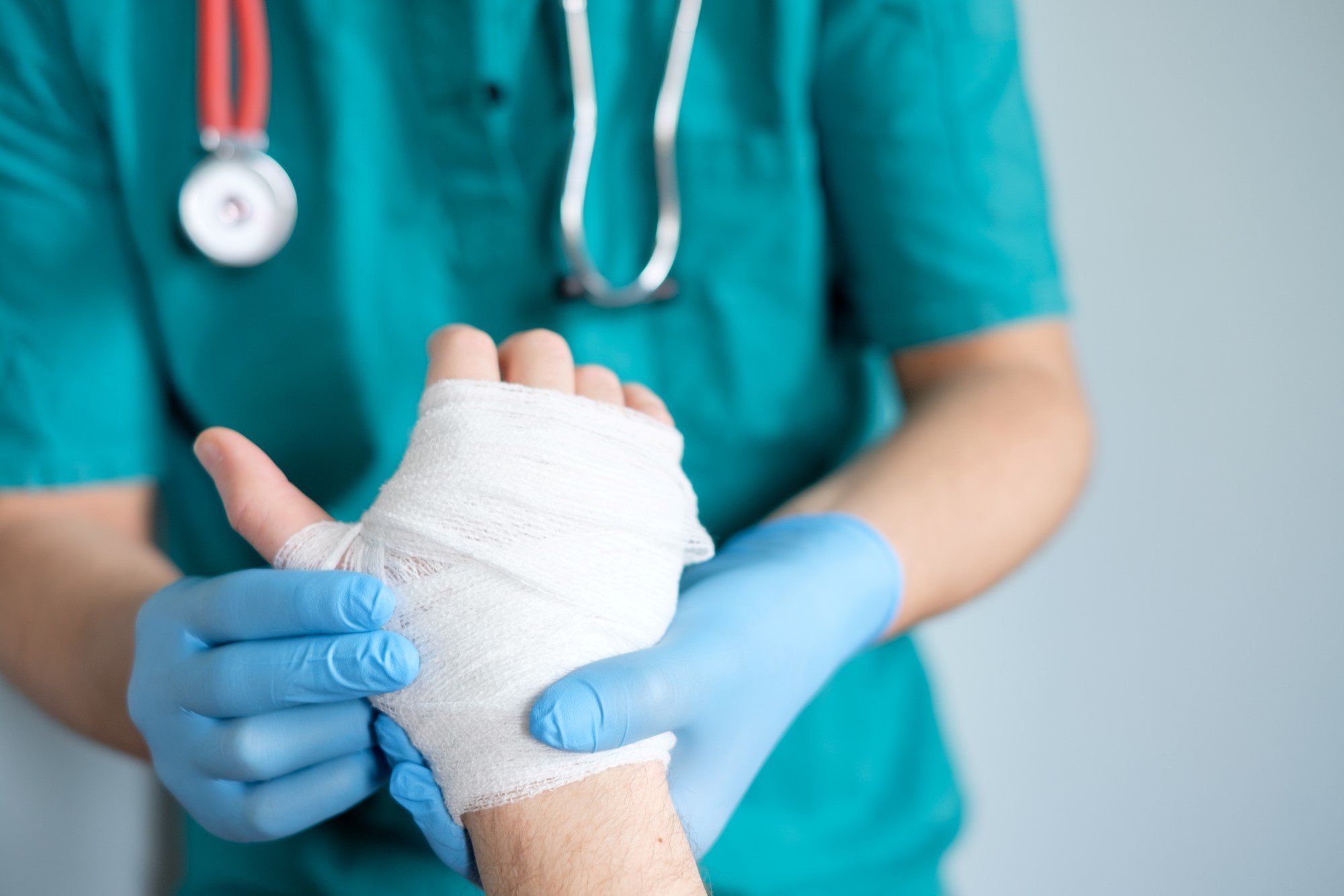Most cuts are minor, but it’s still important to care for them. Most can be treated by cleaning with soap and water and applying a clean bandage. You also may want to treat the cut with an antibiotic ointment.
If you delay care for only a few hours, even a minor wound can build enough bacteria to cause a serious infection and increase your risk of a noticeable scar.
Puncture wounds may not seem very serious, but because germs and debris are carried deep into the tissues, a physician evaluation may be needed. In addition, antibiotics or a tetanus shot may be required.
Wounds that may require emergency medical care include:
- Those that will not stop bleeding after a few minutes of applying direct pressure.
- Deep, gaping, jagged or potentially disfiguring cuts, to avoid the formation of scar tissue.
- Long or deep cuts that need stitches.
- Cuts over a joint.
- Cuts that may impair function of a body area such as an eyelid or lip.
- Cuts that remove all of the layers of the skin like those from slicing off the tip of a finger.
- Cuts from an animal or human bite.
- Cuts that have damaged underlying nerves, tendons, or joints.
- Cuts over a possible broken bone.
- Cuts caused by a crushing injury.
- Cuts with an object embedded in them.
- Cuts caused by a metal object or a puncture wound.
Also call 911 or emergency services immediately if:
- Bleeding from the cut does not slow during the first few minutes of steady direct pressure.
- Signs of shock occur.
- Breathing is difficult because the cut is in the neck or chest.
- The wound is a deep cut to the abdomen that causes moderate to severe pain.
- The wound is a cut to the eyeball.
- The cut amputates or partially amputates an extremity.
To help stop the bleeding:
- Apply firm, direct pressure over a bleeding wound with clean cloth or sterile bandage. Maintain pressure until bleeding subsides, or until trained medical help arrives.
- If the person has been impaled (by a knife, pole or other similar object), do not pull the offending object out of the wound, as this may cause uncontrolled bleeding or organ damage.
- Don’t use heavy pressure if the wound is on the person’s head.
- If bleeding is occurring in a limb, elevate the wound unless you suspect the limb is broken.
- If blood soaks through bandages, do not remove them as this may interfere with clotting. Instead apply more bandages directly on top.
- Deep cuts should not be cleansed. Do not apply antiseptic, as it could damage healthy tissue.
- For wounds that are still bleeding after applying steady, firm pressure for more than five minutes, call 911 immediately. Continue applying firm, direct pressure over the wound with a clean cloth or sterile bandage.
- If bleeding is severe, and you think the person’s life is in danger, wrap a 3″ wide tourniquet above the wound area and pull tightly.
Be aware that injuries that cause bleeding may also cause shock.
A tetanus shot may be required if you have not had one within 10 years or if you are unsure of when you last had one. Tetanus is a bacterial infection that affects the nervous system and is often fatal.
Although most people are aware that stepping on a rusty nail or a puncture wound can cause a tetanus infection, most people do not know that tetanus bacteria can also enter the body even through a tiny pinprick, a scratch from an animal, splinters, bug bites and even burns that break the skin.
 American College of Emergency Physicians
American College of Emergency Physicians







